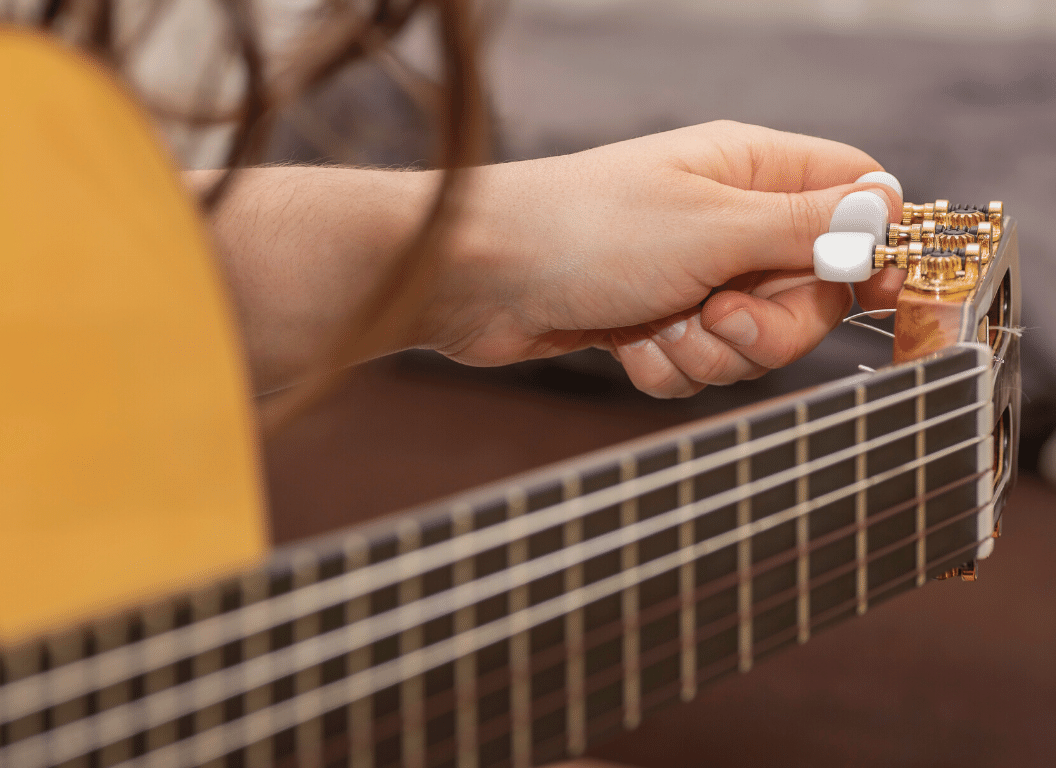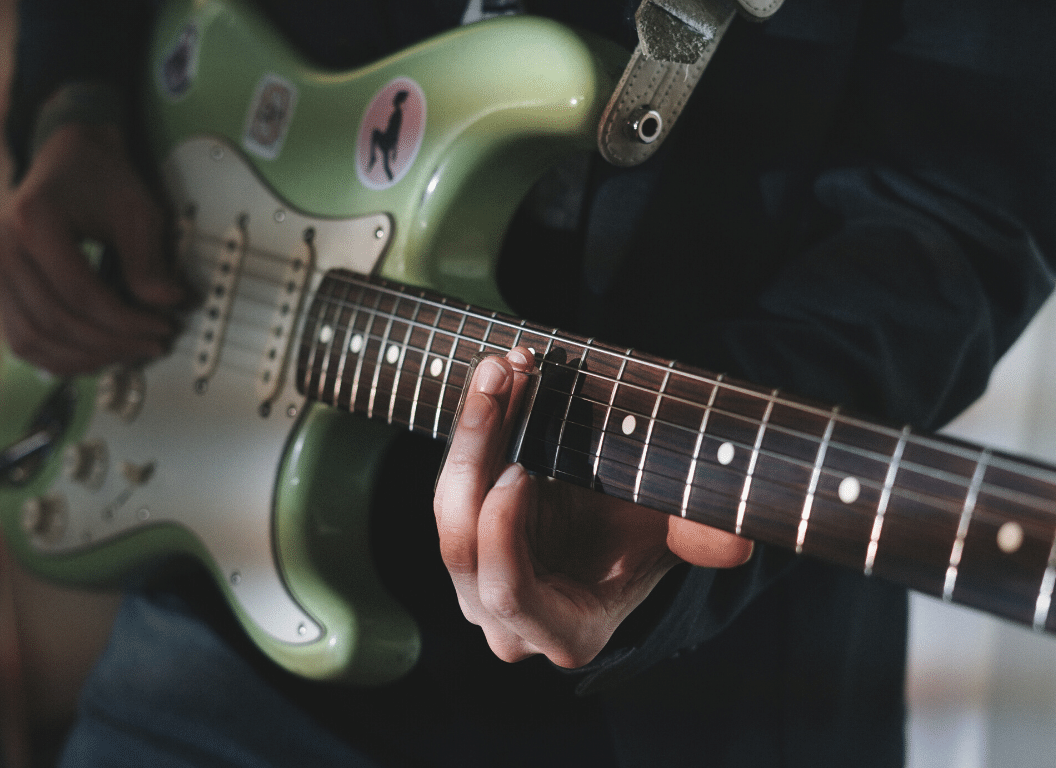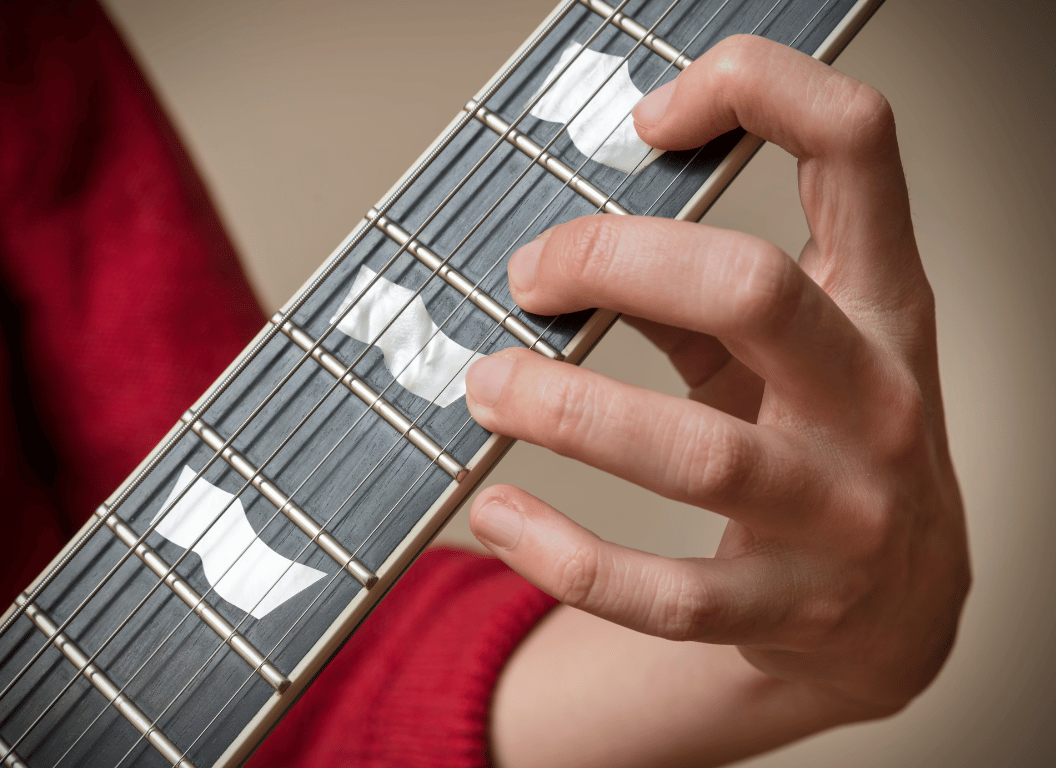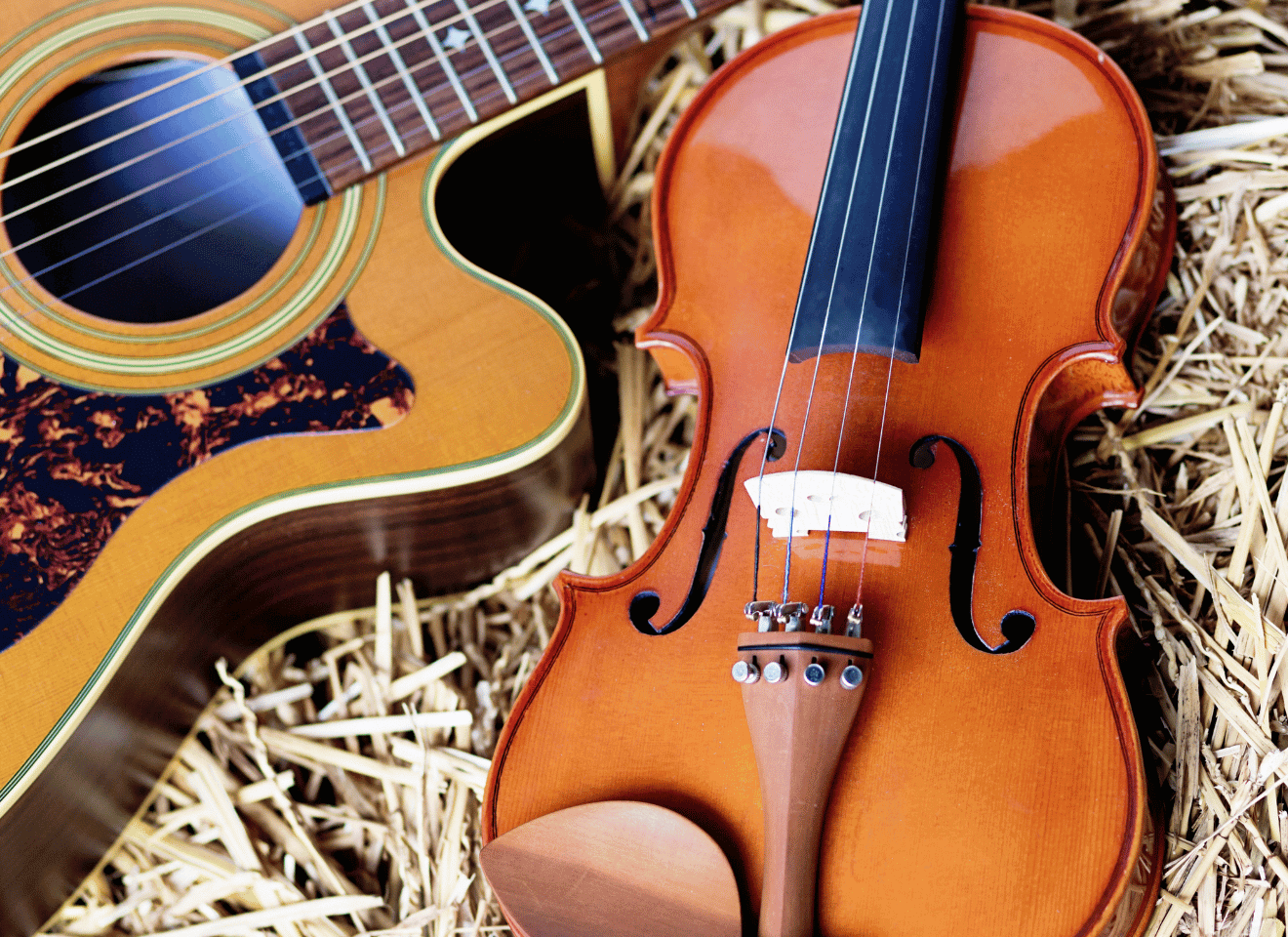Guitars, with their diverse elements of adaptability, facilitate a broad range of musical exploration.
One such feature is the flexibility to adopt alternate tunings.
Different tunings can transform the soundscape of the instrument, enabling unique chord voicings and sonic textures.
Despite this, a question often arises: Is every guitar equipped to handle this divergence?
In this article, we will delve into the compatibility of alternate tunings with various types of guitars.
This exploration aims to provide valuable insights to both beginners and seasoned guitarists.
Table of Contents
- Can You Use Alternate Tunings On Any Guitar?
- How to Properly Tune Your Guitar to Alternate Tunings?
- Common Alternate Tunings and Their Unique Sounds
- Effects of Tuning on Acoustic Guitar
- Can Electric Guitars Handle Alternate Tunings?
- Impact of Alternate Tunings on Classical Guitars
- Guitar Neck and String Tension in Alternate Tunings
- Potential Damages from Incorrect Tuning
- The Bottom Line
Can You Use Alternate Tunings On Any Guitar?
Yes, alternate tunings can be used on any guitar, whether acoustic, electric, or classical. However, it’s important to note that some tunings may place extra tension on the neck of the guitar, potentially causing damage. Therefore, caution should be exercised, particularly with older or lower-quality guitars.
In the following sections, we will delve deeper into the world of alternate tunings, exploring their application, impact, and some popular variations.
This is significant because understanding the role that tuning plays in creating the sound of a guitar can unlock a wide range of tonal possibilities.
It’s not merely a matter of shifting pitches; it involves influencing the feel and response of your instrument, and may even open the door to new playing techniques and harmonic colorations.
Additionally, we will discuss the precautions a guitarist must take when experimenting with these tunings, since, as mentioned earlier, they can put additional stress on the guitar.
This added tension could lead to longer-term issues with the instrument if not properly managed.
This will be especially important for musicians who own vintage or lower-cost models.
Lastly, we examine the way alternate tunings have shaped music history, influencing genres from blues to rock, and classical music to folk.
It’s an often overlooked aspect, but the use of tuning within a musical piece has far-reaching implications, providing fascinating insights into the styles and artistic choices of many renowned musicians.
Stay tuned to take a deeper dive into these intriguing aspects of guitar tunings, which will offer practical value and help you further your knowledge and techniques as a musician.
How to Properly Tune Your Guitar to Alternate Tunings?
The process of tuning your guitar to an alternate tuning might seem daunting at first, but with a bit of practice, it’s quite manageable.
To start, you should always have a good tuner handy, whether it be an electronic tuner, a tuning app on your phone, or even a tuning fork if you’re old school.
An essential early step in tuning is to get familiar with standard guitar tuning, which is E-A-D-G-B-E from thickest to thinnest string.
Developing an ear for these standard pitches will provide a valuable baseline when moving into alternate tunings.
With some alternate tunings, only one or two strings will be changed from the standard tuning.
Others, however, will require a complete retuning of all the strings, which can place additional stress on both the strings and the guitar itself.
When choosing an alternate tuning, it is crucial to consider the genre of music you plan to play.
For example, DADGAD is commonly used in folk and Celtic genres, while Drop D is frequently used in rock and metal.
Each alternate tuning has a distinctive sound and can open up new possibilities for chord voicings and scales.
This sentence emphasizes that each alternate tuning, while potentially challenging, can create unique sounds and open up new creative opportunities.
Let’s take DADGAD, for instance, it creates a Dsus4 chord when played open, which offers a mystifying, open sounding chord not attainable in standard tuning.
Each string should be approached one at a time, especially when attempting radical alternate tunings.
Before adjusting, play the string you’re about to retune so you’ll have its standard pitch ringing in your ear.
As you turn the tuning peg, keep strumming the string, so you can hear the pitch changing.
Once you’ve reached your desired pitch, allow the string to settle before moving on to the next one.
This indicates the importance of a careful, thoughtful tuning process.
Rushing the process might cause incorrect tuning, which would distort the intended sound.
Furthermore, abruptly changing the tension on the strings can lead to premature string breakage.
If you’re using a digital tuner, pay attention to the visualization as it will show when the string is in tune.
With practice and patience, tuning your guitar to alternate tunings will become a simple and rewarding process.
Common Alternate Tunings and Their Unique Sounds
As musicians, we are ceaselessly in search of new methods to deviate from the norm and innovate our art.
When it comes to guitar-playing, this innovation often stems from the use of alternate tunings.
But what exactly is alternate tuning, and how does it create unique sounds? Let’s take a deeper look into it.
Diving into Alternate Tuning
Alternate tuning, or open tuning, is simply taking your guitar out of standard tuning (EADGBE) and adjusting the strings to create a different, often open and more resonant, sound.
Examples include DADGAD, Open C, and Open G.
These tunings break away from the traditional, offering guitarists new possibilities for chord voicings and fingerings.
It opens the doorway to new melodic sequences that may have been difficult or completely impossible to access using regular tunings.
Exploring the Sounds of Alternate Tunings
Different tunings offer different tonalities.
For instance, DADGAD, a crucial facilitator of Celtic and folk genre guitar playing, is adored for its droning and atmospheric sounds when strummed openly.
The Open C tuning similarly permits fabulous drones and creates a wonderfully full, bright resonance.
Open G, famous for its use in blues and rock, offers guitarists a distinctively warm and hearty tonality.
Each alternate tuning has the potential to unlock a totally unique character and emotion in your musical expression.
Advantages of Alternate Tunings
Alternate tunings are also excellent facilitators for beginners.
These tunings, like Open G and Open D, involve all six strings being strummed, turning the guitar into a ‘strummed instrument’ rather than a /’fingerpicked/’ one, and simplifying the process of learning new chords.
Take a look the aforementioned video to further understand alternate tunings and learn how they can unleash your creativity.
These tunings enhance the guitar’s melodic possibilities, bringing your favorite songs to life in a new light, and even inspiring your own original compositions.
Alternate tunings are both an innovative and practical tool in the hand of guitarists, promoting originality in artistry, simplifying chord learning processes for the novice, and offering a library of new sounds to explore.
Effects of Tuning on Acoustic Guitar
The Essence of Alternate Tunings
Alternate tunings offer a different approach to playing the acoustic guitar, illuminating different musical possibilities.
Despite the common standard tuning (E-A-D-G-B-E), alternative tunings break this convention, thus presenting different chords and scales.
They essentially alter the sonic texture of the instrument, creating a distinct mood and resonance that would be different in standard tuning.
Recognized by many musicians, alternate tunings enable creativity and versatility.
The precise effects of these tunings hinge considerably on the guitar model, string gauge, and the player’s skill level.
The precise effects of these tunings hinge considerably on the guitar model, string gauge, and the player’s skill level.
In addition, players must thoroughly understand how each tuning affects the guitar’s playability and the strain on the strings.
An incorrect understanding might lead to potential damages or performance issues.
Effects on Resonance and Tone
Acoustic guitars are naturally resonant instruments, and alternate tunings augment this resonance in ways that standard tuning cannot.
With alternate tunings, the guitar is able to create a wider range of harmonic content as well as unique chord voicings and tonal qualities.
Open tunings, for example, can make the guitar sound much bigger and resonant as they allow all the strings to ring out as a full chord.
On the other hand, dropped tunings can lead to a heavier, darker tone, that can be great for certain styles of music such as blues or rock.
With alternate tunings, the guitar is able to create a wider range of harmonic content as well as unique chord voicings and tonal qualities.
It needs to be confirmed that these changes can dramatically impact the overall sound of the guitar.
And if utilized properly, can open a world of unique musical opportunities.
Effects on String Tension
The tension of the guitar strings changes with each distinct tuning.
Higher tunings increase the tension on the strings, and can provide an increase in volume or brightness.
Contrarily, lower tunings decrease the tension, which can create a darker, more mellow sound.
However, the shift in tension can also pose potential risks to the guitar.
Drastic changes, especially towards higher tunings, may cause the strings to snap or damage the guitar’s neck.
Higher tunings increase the tension on the strings, and can provide an increase in volume or brightness.
Responsible knowledge about alternate tunings can prevent these damages while also introducing a multitude of new musical expressions.
Each tuning inherently possesses a unique emotional language that contributes to the overall musical narrative.
That is why many guitarists constantly experiment with different tunings to broaden their musical horizons.
Can Electric Guitars Handle Alternate Tunings?
Alternate tunings have been used by guitarists throughout history to achieve unique sounds and open up new possibilities in songwriting and performance.
But, can electric guitars handle these alternate tunings as well as their acoustic counterparts?
This is a subject of great interest to many musicians, especially those who primarily play electric guitar.
Fretboard Layout and String Tension
One of the main aspects to consider when tuning an electric guitar to an alternate tuning is the interaction between the fretboard layout and string tension.
An electric guitar’s strings are set up in a specific way to maintain proper tension, and changing the tuning can dramatically alter this balance.
However, proper management of the string tension and understanding of the guitar’s fretboard are key to making alternate tunings viable.
There are many professional guitarists who often employ alternate tunings on their electric guitars and achieve great results.
Electrics can definitely handle the alternate tunings, provided they are correctly set up and the player understands the implications of the tuning changes.
To support this statement, think about the myriad of musicians who regularly use alternate tunings with their electric instruments.
Artists such as Jimmy Page of Led Zeppelin and Jonny Greenwood of Radiohead frequently use alternate tunings in their work.
Impacts on Amplification and Effects
Given that electric guitars are often played through amplifiers and with effects, one might wonder how alternate tunings might affect these factors.
Interestingly, the use of alternate tunings on an electric guitar can create unique tones and resonances that can be further enhanced by effects such as distortion, reverb, and delay.
For example, using an open tuning can create a rich, particular tone that is quite different when amplified.
Also, the use of certain effects pedals can draw out distinctive resonances within these alternate tunings.
The result?
An enriched sound palette and enhanced musical creativity.
Take the band Sonic Youth as an illustration; they consistently use alternate tunings and effects to create their recognizable sound.
Possible Problems
Are there any potential problems when using alternate tunings on an electric guitar?
Like any tool, the use of alternate tunings requires care and knowledge.
Sudden, drastic changes in tuning can place stress on the strings and the neck of the guitar, leading to potential damage if done incorrectly or too frequently.
Maintain your guitar’s health and longevity by gradually changing tunings when necessary, and consider having your guitar professionally setup if you plan on using a particularly unusual or demanding tuning.
Remember, experimenting with tunings should not result in harming your guitar.
Watching the embedded video might provide you greater insights on properly tuning your guitar.
Our video discusses E standard tuning and can give you a solid understanding, which can help you successfully venture into the realm of alternate tunings.
Impact of Alternate Tunings on Classical Guitars
Classical guitars have a distinctly different design from acoustic and electric guitars, this difference goes beyond merely the sound it produces.
People often associate classical guitars with the usage of standard tuning; however, alternate tunings can be applied to them as well.
Adapting to different tunings with a classical guitar might seem like a challenging field due to their structure and string type.
A significant difference in classical guitars lies in the composition of the strings themselves.
They use nylon strings, which allows these guitars to produce a softer, mellower tone.
Specially, nylon strings are perceived to be more elastic and forgiving than steel strings.
Given these characteristics, nylon strings do not snap as rapidly as steel strings when subjected to change in tuning.
When using alternate tunings, the risk of string breakage can be less severe with nylon strings as compared to steel counterpart.
Given these characteristics, nylon strings don’t snap as rapidly as steel strings when subjected to change in tuning.
Therefore, if you’re fearing string breakage when trying alternate tunings on a classical guitar, nylon strings offer a bit more room for experimentation.
However, bear in mind, that heavy-handed tuning changes can still pose a threat to the guitar’s overall health even with nylon strings.
Another element to consider is the neck of the classical guitar, which differs from the electric or acoustic ones.
Its wider and flatter neck shape can influence how the guitar reacts to alternate tuning.
The tension generated by alternate tunings can be tougher on the necks of classical guitars making them susceptible to damage.
Despite the wider necks, proper precautions, and careful treatment should be the rule when exploring different tunings.
The string tension and potential warping of the guitar neck should be closely monitored to prevent long-lasting damages.
The string tension and potential warping of the guitar neck should be closely monitored to prevent the long-lasting damages.
While alternate tunings offer a different array of tonal possibilities, they come with a responsibility of increased maintenance and attentive care.
Always ensure a gentle approach, particularly with classical guitars, to safeguard your instrument against any adverse effects of alternate tunings.
Despite the advantages and risks involved, the use of alternate tunings on classical guitars can yield an interesting sound, deeper and more resonant than typical tunings.
This unique sound is different compared to what we usually hear from a classical guitar.
While the rich and full bodied sound is preserved, classical guitars can achieve more depth and resonance with alternate tunings.
Thus, alternate tunings on a classical guitar offer a rich spectrum of experimental possibilities, distinct from standard tuning.
Overall, players who are adventurous with their sound can exploit alternate tunings in their classical guitars for unique musical pieces.
Classical guitars can achieve more depth and resonance with alternate tunings.
In conclusion, the impact of alternate tunings on classical guitars involves a blend of advantages and risks.
Classical guitars, with their nylon strings and distinct neck design, can indeed handle alternate tunings, yet with an increased risk of potential damage.
Nonetheless, the unique sound rendition can ultimately make the exploration worthwhile.
Guitar Neck and String Tension in Alternate Tunings
The guitar’s neck and string tension are crucial components for achieving the desired sound when using alternate tunings.
With alternate tunings, unique guitar sounds can be created, but these unconventional methods have effects on both the guitar neck and string tension.
Importance of the Guitar Neck in Alternate Tunings
The guitar neck’s design and construction determines its stability when handling different tuning methods.
Strong, well-constructed necks can cope with the shifts in string tension caused by alternate tunings without warping or damaging the structure.
Lower quality guitars may have necks that are not robust enough to withstand these tensions,
leading to permanent bends or warps in the neck material.
Identifying whether a guitar’s neck can handle alternate tunings is a key factor in maintaining the instrument’s longevity
Such information can usually be found in the guitar’s manual, or by consulting with a guitar technician or luthier.
Effect of String Tension on Guitar Sound and Playability
When the tuning of a guitar is altered, the string tension changes, which affects both the sound produced and the playability of the instrument.
Altering the tuning of the strings changes the vibration pattern and resultant pitch of the sound produced.
Moreover, changes in string tension directly influence the amount of pressure a musician must apply to the strings to create a clear, clean sound.
Tuning a string higher than standard tension makes the string tighter, thus requiring more force to fret the string properly, while lower tension makes the strings looser and easier to play
It’s important to consider this impact on playability, particularly for those who may have physical limitations or are newer to guitar playing.
Viewing the video provided above could offer a clearer, more visual understanding on the role of guitar neck and string tension in alternate tunings.
The video also provides practical examples, and further explanation on how these factors affect your instrument and your music.
Adapting to the Effects of Alternate Tunings
Alternate tunings offer many creative possibilities, but mindful consideration should be given to the effects on your instrument.
Choosing a guitar designed to handle these tunings, and understanding the changes in string tension and playability, can help musicians adapt to and even benefit from these effects.
Always remember, the more you understand your instrument and how it responds to alternate tunings, the more control and freedom you’ll have in creating and playing your music.
Potential Damages from Incorrect Tuning
When dealing with alternative guitar tunings, it is essential to understand the potential damages that can result from incorrect tuning practices.
String Breakage
One of the most common types of damage is string breakage.
If a string is tuned too high, it can snap, causing injury and necessitating the need for a replacement.
Additionally, frequent tuning can put stress on the strings, increasing the risk of breakage over time.
One of the most common types of damage is string breakage.
If a string is tuned too high, it can snap, causing injury and necessitating the need for a replacement.
This heightened risk can be mitigated with proper tuning techniques and regular maintenance, making it a manageable aspect of guitar ownership.
Structural Damages
An often overlooked aspect is that incorrect tuning can also lead to structural damages to the guitar.
Excessive tuning can place undue stress on the guitar’s neck, potentially causing warping or bending over time.
Excessive tuning can place undue stress on the guitar’s neck, potentially causing warping or bending over time.
Furthermore, the tension the strings place on the bridge can also be harmful if not balanced correctly.
Prolonged incorrect tuning can, ultimately, result in costly repairs or irrevocable damage to your instrument.
Impacts on Sound Quality
Beyond the physical damage to the instrument, incorrect tuning can also have a significant impact on the sound quality of your guitar.
An improperly tuned guitar can produce distorted or out-of-key notes, greatly affecting the overall sound produced by the instrument.
If this is a consistent issue, it may be a sign that your tuning habits are not only damaging the physical structure of your guitar, but also the music it produces.
An improperly tuned guitar can produce distorted or out-of-key notes, greatly affecting the overall sound produced by the instrument.
Therefore, it is crucial to learn the proper tuning techniques to maintain the longevity and quality of your guitar, and the music you create with it.
Preventing Damages
To prevent these potential damages from incorrect tuning, regular maintenance and understanding the correct techniques and methods are key.
It’s always wise to consult with a professional or conduct sufficient research to ensure you’re following the best practices.
These practices include but are not limited to: knowing the right tension for your strings, not rushing the tuning process, and regularly replacing strings.
It’s always wise to consult with a professional or conduct sufficient research to ensure you’re following the best practices.
Thus, incorrect tuning can lead to a wealth of potential issues, both in terms of physical damage to the instrument and decreased sound quality.
However, these risks can be drastically reduced through proper tuning practices and maintenance.
The Bottom Line
Ultimately, alternate guitar tunings offer a new dimension of creative expression for guitarists, enabling unique sounds that further embellish the richness of music.
While the process of tuning, especially in an alternate sense, requires a hands-on, knowledgeable approach to maintain the health of the guitar, the rewards are undoubtedly impactful.
The effects differ across acoustic, electric, and classical guitars, making it a versatile technique.
It’s important to understand the role of string tension and the guitar neck for effective tuning, as incorrect methods can lead to long-term damages.
Regardless of frequent tuning changes, maintaining the health of your instrument is crucial and achievable.
Encouraging musicians to experiment and explore unique alternate tunings opens up a world of musical possibilities.

More than 10 years of experience playing and writing about guitars! When not writing, I can be found strumming away some Johnny Cash tunes. Favorite all time guitar is the Gibson Les Paul. #TeamGibson




